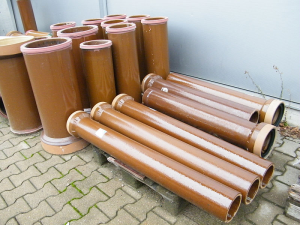Grease Traps-The First Line of Defense
Grease traps also known as grease interceptors are plumbing systems that serve as our first line of defense when it comes to preventing fats, oil and grease (FOG) from entering the water waste management system and eventually the ocean. A grease trap, which is usually made of hard plastic, fiberglass or concrete and placed inside the kitchen or buried underground, is therefore very important when it comes to reducing the impact of our existence to the environment. When grease from foodchains, restaurants and even from residential kitchens get into the ocean unmitigated, it would have the effect similar to an oil spill and that is why water waste management system is enacted to control this effect. But without grease traps, water waste management will have a hard time controlling the influx of FOG thus, this technology is indeed our first line of defense and without it, the price that we will have to pay will be great. If you want to check out some polyurethane grease traps check out the Schier Trapper II series.
So how does a grease trap or interceptor work? Grease traps generally work by slowing down the flow of water and grease down the drain which allows the grease to coagulate and float while the solid wastes settle down at the bottom of the trap. Through this simple separation process, the water that remains can now enter into the sewer system and into the wastewater management facility. In most cases, when the trap is small enough, it is usually installed inside the kitchen but for larger kitchens that need larger traps, it is usually installed outside the outfit.
As already mentioned above, grease traps need maintenance and its a very unpleasant business. If you are not apt to the task, you can always hire the services of professional grease trap cleaners. The advantage of just hiring the pros is that they already know what they are doing and thus, they know what to expect. Added to that, they also know how to dispose of the non-hazardous materials that they have taken from your septic tank in ways that would have gotten you fined had you taken the matter in your own hands. JR Grease Services has over 30 years experience when it comes to grease trap cleaning.
When picking a grease trap cleaner make sure that you pick one that will do everything for you. This means that you get the whole package and all you need to do is pay them. I mean, do you really have to concern yourself with the ins and outs of grease trap cleaning when somebody else can do it for you? There are grease trap manufacturers or suppliers who would also offer to do maintenance, so if you are using a pre-fabricated grease trap like those from Ashland Polytrap, ask the manufacturer if they can maintain it for you.
According to experts, a grease trap should at least be cleaned once every three to six months. This would of course defend on its size and the traffic. If you are operating a big restaurant in the famous side of town, then you should adjust accordingly. Now hiring a grease trap cleaner might be the easiest way to maintain a trap but the caveat here is that it is also costly. This will greatly add up to the cost of maintenance overhead of your restaurant or whatever you are running.
There is a better and less costly way to maintain a grease trap and that is to use bacteria to digest the FOG. The bacteria will eat up the FOG leaving just carbon and water as byproduct. Eventually the bacteria will be washed out into the sewer system which will benefit it further because there, it will continue to eat up the FOG that escaped the grease trap. Wade International Ltd. has a grease converter which converts grease into biodegradable byproducts.
The bacteria comes in several types. There is the liquid form wherein you just pour it down the drains or directly down the trap and there is the block type where you just hang it by a rope and into the trap because it dissolves slowly and could last about four weeks. You can also install an automatic pump to your grease trap that will pump in the bacteria into the trap at set interval. This will make your grease trap virtually maintenance free.
Avoid the use of enzymes as treatment because this is prohibited in some areas and the FOG that is melted in the grease trap through this method will coagulate again in the sewer system because they are not actually eliminated.
In order to maintain a grease trap in good operating condition, you have to keep records of when procedures such as pumping out, cleaning out and adding of bacteria were done so that you will know when to do them again. Encourage your staff to throw solid waste into the trash instead of rinsing everything into the drain. If you fail to do this, expect that your grease trap will eventually be clogged out and bad odor will come out of it. Avoid hot flushing the drain, that is, pouring hot water into it because this will kill the bacteria in the trap and will prevent the grease from coagulating. If the bacteria are killed, they can no longer eat up the FOG and when grease does not coagulate, it will just flow into the sewer lines causing you to get fined as a result. For grease traps and other plumbing supplies check out Jay R. Smith Mfg. Co.
The other method of cleaning a grease trap is to pump out its content. This is perhaps the most common method and the costliest of all. In most cases, you would have to hire a grease trap pumping service to do it for you and perhaps you should, considering that doing it yourself is a very unpleasant business. But if you are really apt to it, here are the steps.
1. Open the cover of the trap but make sure you don?t damage the gasket. If you?ve damaged the gasket, make sure to replace it because if you don?t odor and some of its nasty contents will come out of the trap.
2. Shovel the FOG and put it in a garbage can. This will clog the pump if you will not remove it first.
3. Pump the wastewater out of the tank and make it dry. If there are some stubborn dirt, pressure wash the wall of the tank to remove it. If after pressure washing some stubborn dirt still cling to it, then it?s time to scrape it out.
A picture of a new commercial stainless steel grease trap
4. Next, you need to put clean water into the trap. Make sure that the water level is as indicated in the specs of the grease trap.
5. Make sure that the FOG that you have removed is properly disposed or recycled.
In most areas, it is required that you keep a chart of your grease trap maintenance. This is not exactly a bad thing because this will also serve as a reminder for you. In some cases, enzymes are used to dissolve the FOG but, if you decide to use it, make sure that it is not prohibited in your area. Consult Canplas Plumbing for more information.
This is everything you need to know about how cleaning and pumping are done by cleaners and the design and installation of grease traps like Big Dipper for restaurants.
1. A good grease trap must slow down the passing of wastewater so that the greasy waste has time to separate out. This means that it should be able to hold all the wastewater of the kitchen at the time that it is heavily used for as long as 20 minutes ( an example of this is the Watts WD-20 grease trap which has a flow rate of 20 GPM). The capacity of your grease trap should not be smaller than 55 gallons and if there are lots of fixtures that you want to attach, you should opt for a bigger one.
Grease Trap Cleaners?The Men in Black
2. The length of the trap should be twice its depth. You have to remember that the content of the trap usually occupies 2/3 of its total depth and the remaining 1/3 is head space. When making this measurement, the thickness of the wall should not be included.
3. The total surface area of the trap should be between 1000 to 2000 times its total depth measured in millimeters. Again wall and cover thickness should not be included in measuring this.
Grease Trap Cleaning?How to Maintain a Grease Trap
4. So that the wastewater and the greasy top layer will not mix, there has to be a baffle at the inlet of the trap which will slow down the flow of water coming in. The inlet pipe should be bent 90 degrees downwards so that incoming water will terminate below the trap.
This post first appeared on http://www.theplumbinginfo.com




 The holiday season can be draining. Don’t let issues with your plumbing add to your holiday stress. Check out these tips on making sure your drains are holiday-ready.
The holiday season can be draining. Don’t let issues with your plumbing add to your holiday stress. Check out these tips on making sure your drains are holiday-ready.